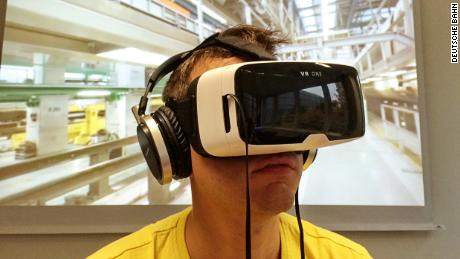How VR is transforming HR

German railway company Deutsche Bahn began using VR four years ago to attract new staff. Potential hires can wear a VR headset and “within a matter of seconds can experience a job in a very real-life atmosphere,” according to Kerstin Wagner, Deutsche Bahn’s head of talent acquisition.VR can also help companies to pick the best people for their team. Israeli technology company Actiview has developed a recruitment platform that uses a VR interface to assess candidates. Its technology also allows employers to offer new recruits a virtual tour of their offices or a chance to virtually meet the chief executive.Using Actiview’s platform, candidates participate in a puzzle-based test. “The VR simulation allows us to control what the user sees, hears, feels. We see their behavior, and we can collect that data,” explained Roy Elishkov, Actiview’s vice president of strategy and business development. “We can monitor their approach. Do they explore the space first, strategize? Are they mission-oriented, do they solve the puzzles in a linear order?”Transforming the way companies trainVR is transforming the way training is delivered. For example, the British Army recently unveiled a pilot program that will use VR to train soldiers and, since 2017, fast-food chain KFC has been using a VR game to teach staff how to cook fried chicken.While the use of VR for staff training and recruitment is not yet mainstream, experts believe it will be in the future.”VR allows the user to feel immersed in an experience, which is really useful from a skills perspective. There’s a cost argument too, as it can be logistically challenging to create these training scenarios in the real world,” said Jeremy Dalton, head of VR at consulting firm PwC UK. “VR allows you to explore workplace scenarios and understand the impact of your choices and actions. It is also an effective tool for hands-on training, letting people perform the actions with their own hands,” he added.According to Arturo Schwartzberg, co-founder of e-learning company SweetRush, putting on a headset and being immersed in a VR experience can help build empathy. “You can experience what is it like to be in a wheelchair, or be the minority in the room, or to do someone else’s difficult job that you never really thought about,” he said.SweetRush worked with Hilton to develop a VR experience to give office staff a taste of the reality of running a hotel, from the front desk to housekeeping. After a successful pilot, the VR experience has been rolled out to six of Hilton’s corporate offices globally.”During the immersion, team members can walk through the hotel and participate in unique operational tasks, like setting up a room service tray,” said Gretchen Stroud, vice president of talent, learning and engagement at Hilton. “They are guided through the process by ‘Vic’ our Virtual Concierge.”Tackling the gender pay gap? A new wave of technology companies are now looking at innovative ways to further utilize VR in the workplace. For example, Vantage Point has developed a VR-based training platform to deliver immersive anti-sexual harassment training for companies. Its training walks users through a number of situations, such as an office party where the lines between the personal and the professional are blurred, with the user choosing how to react to specific comments and actions.”VR allows the employee to see the body language, hear the tone, experience the context of the situation,” said Vantage Point founder Morgan Mercer said. “Is John leaning into Sally’s space when he makes a specific comment? What’s his tone? Does she appear uncomfortable? Those are things you have to see, hear, feel.”Mercer is now working on a VR program aimed at helping women develop negotiation skills in a bid to address the gender pay gap.”It will allow you to sit across the table from your boss in a virtual negotiation, to say the words you will say, to practice and then to get a sense of your outcome versus your peers,” she said. “It could be incredibly impactful for gender parity.”






